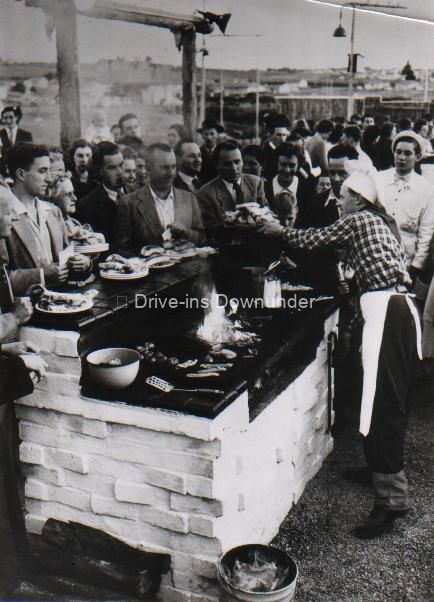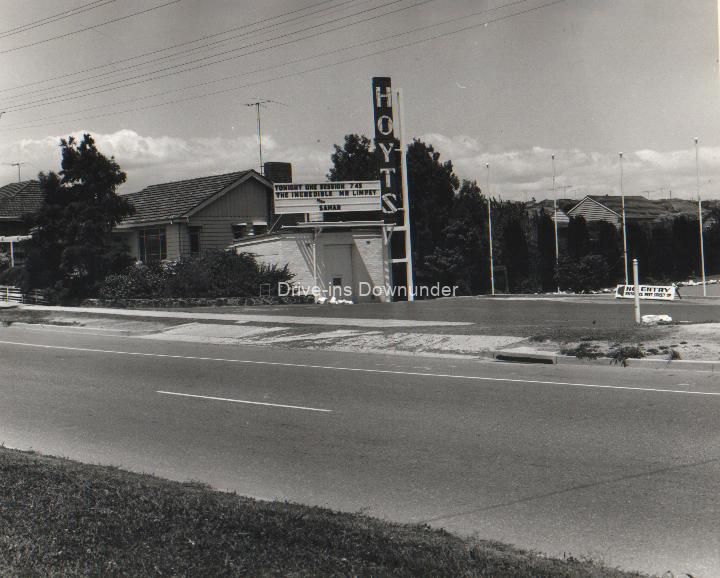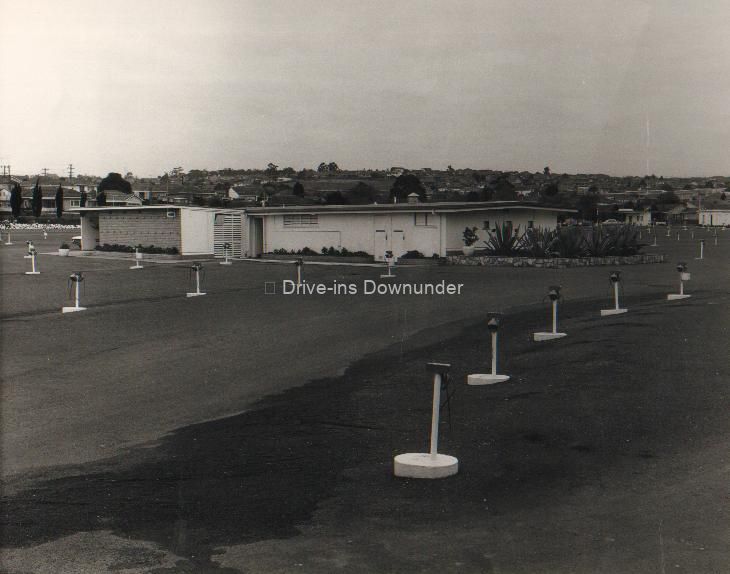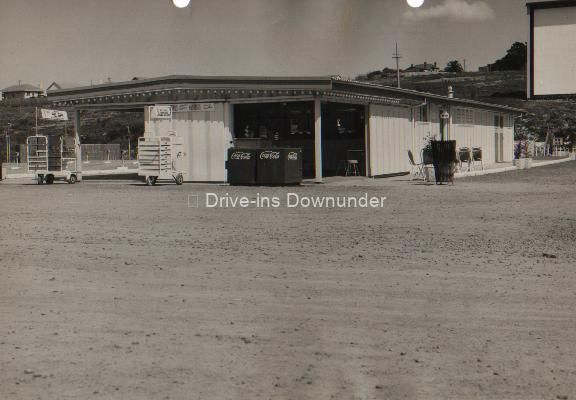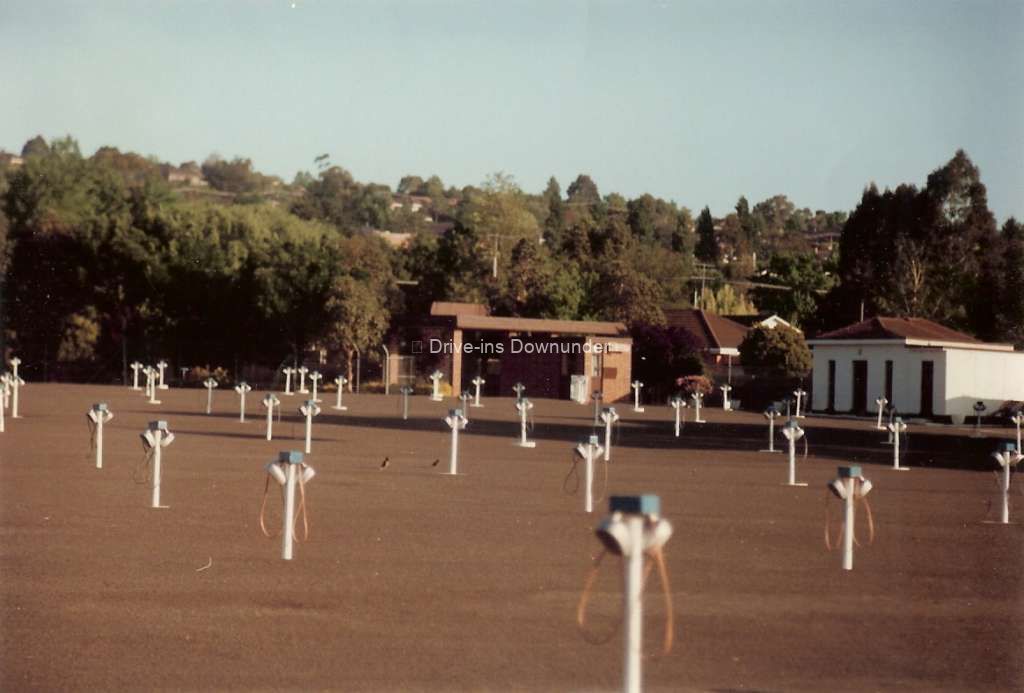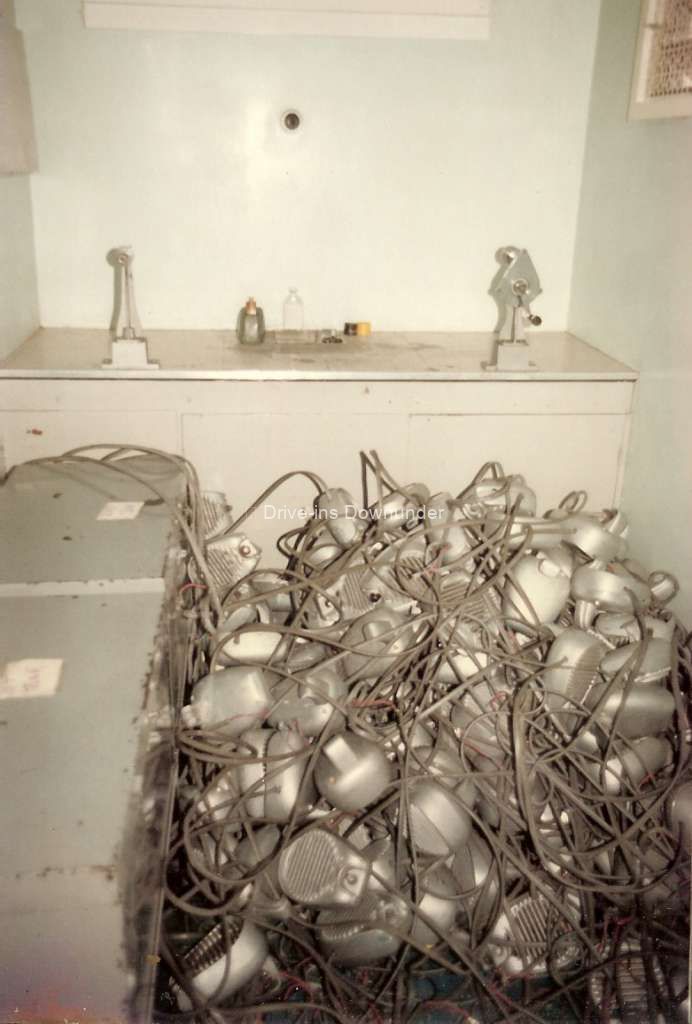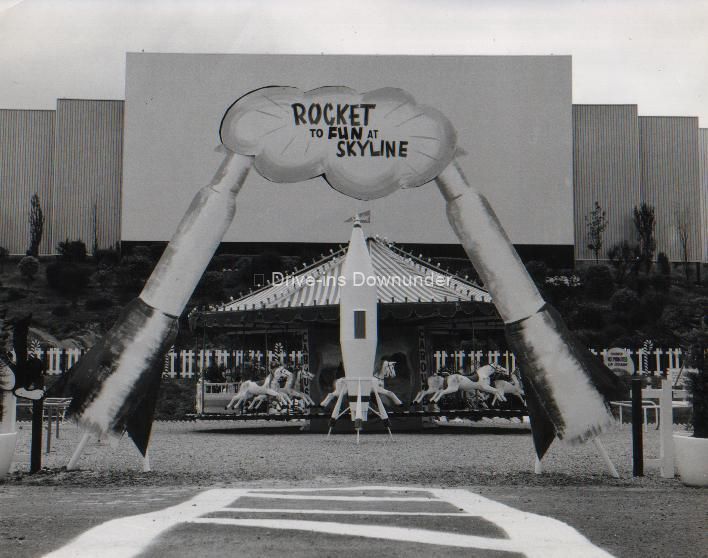
Burwood Skyline (Hoyts)
Opened: February 19, 1954
Location: Burwood Hwy, Burwood
Capacity: 743 Cars
Screens: One
Operator: Hoyts Theatres Ltd
Closed: June 1983
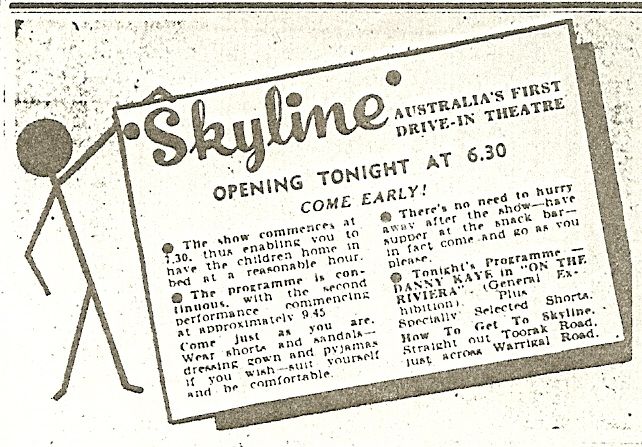
After a visit to the US in the early 1950’s Hoyts’ southern division manager, George Griffith Jnr, a showman of the first order, considered that drive-in theatres would be successful in Australia. The three major ingredients required for successful drive-ins were: plentiful land, good weather and high car ownership; Australia now possessed all three with car ownership growing rapidly in the 1950s. Hoyts and their owner, Twentieth Century Fox, however did not necessarily share Griffith’s enthusiasm for the establishment of a drive-in theatre; they were enjoying solid cinema profits in the boom post war years prior to television. Griffith subsequently formed a syndicate outside of Hoyts and the group decided on a site in the Melbourne suburb of Burwood located on the Burwood Hwy in a natural valley. The area mostly consisted of paddocks, but new housing was spreading throughout the area rapidly. Auto Theatres Pty Ltd was formed and registered at 191 Collins Street; this was the Hoyts Regent Theatre building which housed their Southern regional head office and the office of George Griffith Jnr. The story of Burwood, Australia’s first drive-in, mirrors the entire drive-in business in this country.
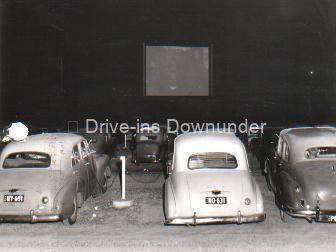

Construction proceeded through the latter half of 1953 from plans drawn up by AC Leith Bartlett & Partners in conjunction with RCA Australia. The site was said to form a natural amphitheatre where the drive-in field faced a steep hill with sufficient elevation to mount the screen without the need for a screen tower. Between the screen and the field flowed Gardiners Creek. The screen was one of the few Australian drive-in screens built in the academy standard aspect ratio of 1.33:1. The first cinemascope film, “The Robe”, had just opened at the Regent and the second Cinemascope film to run in Melbourne, “Beneath The Twelve Mile Reef”, was about to open at the Plaza the week of Burwood’s opening. On February 18, 1954 the Skyline Burwood opened to the public after a preview screening to an invited audience of “The Conquest Of Everest” the night before. The opening film was Danny Kaye and Gene Tierney in “On the Riviera” a three year old film from Fox. The fact it was supplied at a flat rate as opposed to the normal percentage basis displayed either the relatively low expectations that all except the developers had for the concept or the canny negotiating skills of Mr Griffith.

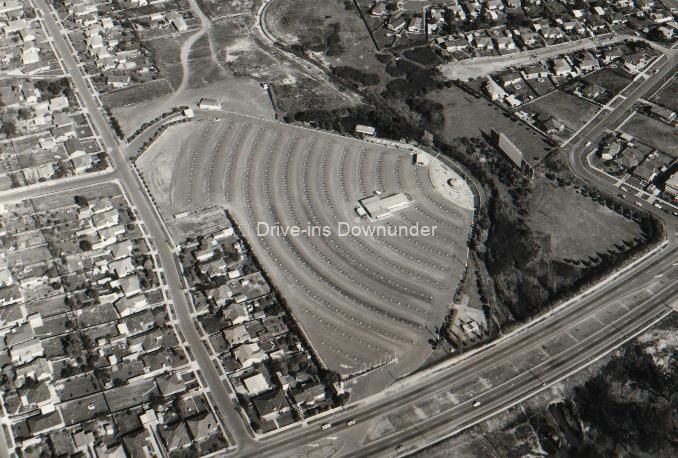
Any skeptics that believed the drive-in concept would not be successful in Australia were proved wrong on that very first night. Traffic jams were caused in both directions along Burwood Hwy. The drive-in’s entrance was located along a small suburban side street, McComas Grove, which remained blocked for hours, not just on this first night, but for years afterwards. The exit was on Burwood Hwy just next to a modest illuminated sign. The 652 car positions within the theatre became the hottest tickets in town. A simple stick figure known as the Skyline man or Skyline Sam welcomed patrons at the ticket box, in newspaper ads, general advertising and in the black and white instructional film run at Burwood. This little 60 second film showed customers how to attach the speaker to their car and how to operate it.
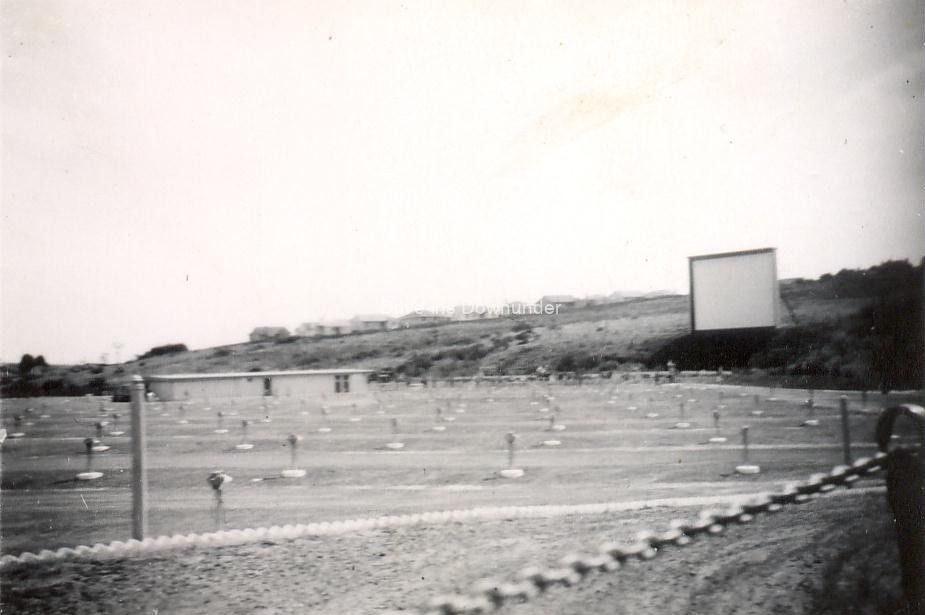

Car-hops, the drive-in equivalent of ushers, not only sold tickets in the driveway, they directed cars on the ramps and performed general security duties. Concessions staff attended to customer food orders at the various counters and could be summonsed by a switch on the top of each speaker to deliver food direct to cars. Roaming vendors with pie carts and Coca~Cola coolers also sold food and drinks direct to cars. The food business in drive-ins turned out to be a much larger contributor to the bottom line than at their hardtop cousins. The large crowds at Burwood caused congestion and dust from the large areas of gravel in and around the drive-in. The Country Roads Board raised concerns about the issue, as did the City of Box Hill. Police were placed on point duty on Burwood Hwy. Two sessions per night were run in an effort to satisfy the audience and it was noted at this time that it took 31 minutes to clear a full field of cars. The two sessions simply caused traffic jams twice as often! Many who could not gain admission simply parked on surrounding roads and tried to at least catch a glimpse of the screen. In an effort to placate the residents of houses in McComas Grove that backed onto the drive-in speakers were wired to each house so they could at least enjoy the movie. Burwood saw not only the birth of Australia’s first drive-in theatre, but also a new projector. The Super Standard projector, manufactured by Fitton’s in Adelaide, made its debut at Burwood in 1954. The serial numbers on the projectors were 100 and 101 and were initially backed by Peerless arcs. Later Ashcraft Super Core-Lite lamphouses were substituted to improve the light on screen. This model of projector, and later the Super 75 made by the same company, was the standard equipment in many drive-ins around Australia due to the association formed by Reg Fitton’s company and RCA. RCA, who offered virtually an entire drive-in equipment package, chose the locally made Super Standard projector to team with the RCA sound gear that included sound heads, speakers, junction boxes and amplifiers. Hoyts and independents utilized this combination until both NTS (Greater Union) and Westrex offered an alternative several years later.


Hoyts, upon seeing the enormous profits to be made with drive-ins, bought out George Griffith and his partners. Drive-ins in Perth, Adelaide, Geelong and other centres followed within months of Burwood. Skyline quickly expanded into a circuit with the construction of drive-ins at Preston, Oakleigh and Broadmeadows in an attempt to corner the Melbourne market. Despite this, over the next few years Village, MGM and various independents followed with drive-ins at Croydon, Dandenong, Rowville, Essendon, Clayton, and Maribyrnong. Regardless of this extra competition, shortly after opening Burwood was expanded. The drive-in could now accommodate over 700 cars. The screen was extended with new material to widen it to cinemascope width around 18 months after opening. The snack bar was enlarged, a chicken and fish bar was built behind the main snack bar, a walk-in was added for 51 patrons and a motor driven merry-go-round was a thrilling addition to the playground beneath the screen. Earlier a steak house had been constructed on a small man made lake at the front left of the drive-in. A western themed BBQ area decorated with cacti and wagon wheels became a feature of Burwood at this time. Side shielding panels were added to the screen to block distracting lights from the houses and streets behind. On the Burwood Hwy frontage a miniature replica Mobil service station was built that housed Victa mini go-karts. Safe driving instruction was given to kids who drove around and even stopped at traffic lights installed as part of the attraction.
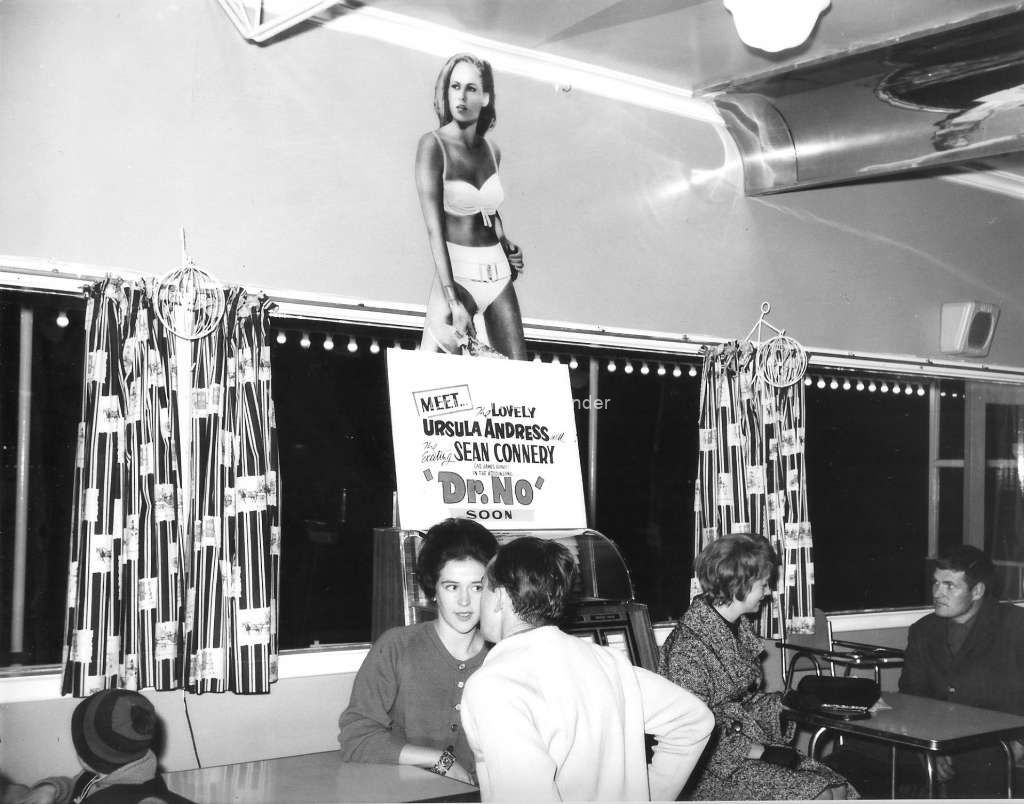

Families loved Burwood and the drive-ins that followed; it was a full night’s entertainment for the entire family. Dad could collect the family straight from work in the family car, relax with a meal that mum did not have to prepare whilst the kids played on the elaborate playground under the screen. This was all before the show even started. “Come as you are”, was the catch cry and soon kids began appearing in pyjamas, mum in her day clothes and dads stopped wearing hats at the pictures. The strength of the Twentieth Century Fox, Warner Bros and United Artists product in the 1950’s and 1960’s ensured solid audiences. Popular films at Burwood included many of the early cinemascope offerings: Marilyn Monroe in “Some Like It Hot”, westerns, James Bond and, of course, “The Sound Of Music”. The Skyline name disappeared in the mid 1960’s and Burwood, along with the other Victorian Skyline drive-ins, were simply then called Hoyts Drive-ins. The famous Skyline Sam stick figure began to disappear from advertising, signage and was removed from his welcoming position beside the ticket boxes.
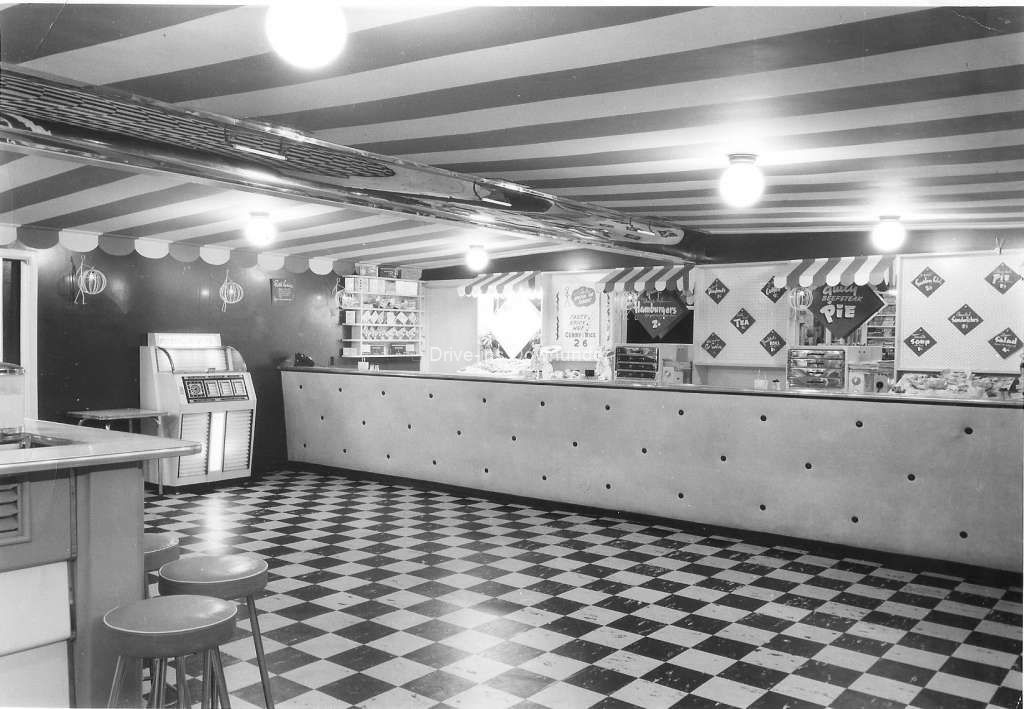

In time for its 21st birthday the toilets were expanded, since up until that time, as with many drive-ins, the length of interval was determined by the length of the queue at the ladies’! In 1975 a new brick ticket box was built to replace the original. Pinball machines were added to the snack bar replacing the juke box that had resided there for many years. By the late 1970s, after a quarter of a century in service, the Super Standard projectors were retired. Hoyts chose to use the Philips/Kinoton FP20 projector for their drive-in fleet. This was a modern projector when compared to the Super Standard, but the Ashcraft carbon arc lamphouses remained despite the upgrade to xenon arcs at other drive-ins. The blockbusters of the late 1970s revitalized Burwood for a time with “Star Wars” and “Close Encounter of the Third Kind” amongst the most popular offerings.


After 29 years, with around 100 cars in to see “We Of The Never Never” plus “Local Hero”, Burwood drive-in closed its gates for the last time on Wednesday June 22, 1983. In the preceding weeks the line-up included “The Last American Virgin”, “Thousand And One Exotic Nights”, “The Erotic Sex Lives Of Romeo & Juliet” and “Lady Chatterley’s Lover”, all a far cry from a Danny Kaye comedy. Hoyts’ Southern Division Manager at the time, Graeme Hodges, commented that he regretted the theatre had to close but believed that patrons of Burwood would be more than adequately provided for by Hoyts’ drive-ins at Doncaster, Wantirna and Oakleigh. The closure rated a mention in a few papers and some fond nostalgia was recalled, but Burwood was the cradle of Australian drive-ins and mostly it has been sadly forgotten. It is only in recent years that the former drive-in has been acknowledged in signage and a small display in the park that partly replaced the drive-in. Errors on the plaque and a marker showing the position of the screen displayed some enthusiasm, but little research, by the local council.
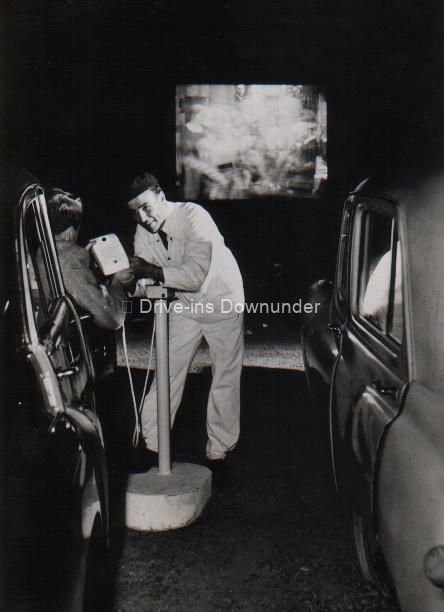

In some ways Burwood closed before its time; it was never twinned or substantially improved after the 1960’s. The dwindling attendance reflected the change in the surrounding suburbs and the fact that older people, once their children had grown up, for the most part, stop attending drive-ins. Drive-ins mostly had a better track record of survival if they were located near young families and the 18 – 35 year old age group. Perhaps drive-ins needed to “keep moving out” to find cheaper land and more patrons? I wonder how many of the thousands of students who now visit Deakin University right across the highway from the old Burwood drive-in site even knew of its existence? Not many I bet, but I’m sure they would be keen customers if that neon sign still glowed nightly and high-lighted the latest attraction.
